I love pygmy sundews. I had known about them since I started growing, but hadn't really given them much thought until I accidentally acquired
Drosera allantostigma at the winter BACPS meeting. They've rapidly become one of my favorite groups of sundews, and I was fortunate to win a few in the NASC auction recently.
As an aside, pygmy sundews epitomize what I love about the whole genus
Drosera – as I mentioned in
my conversation with bluemax, it's amazingly diverse and adaptable. Pygmies live in Western Australia, where they face mild, rainy winters and hot, generally dry summers. To grow in this environment, pygmies have surprisingly long root systems, and retreat into a hairy stipule bud for the summer, to avoid scorching and water loss. Once the days begin to shorten they produce gemmae (leaf buds modified to maximize vegetative propagation), which get packed so tightly that they are like a coiled spring. When the season's first raindrops strike the loaded pygmies these gemmae (singular: gemma) are catapulted as far as a meter+ away, where they sprout new plants. What a fascinating life cycle!
Anyway, pygmies are also really cute and more or less tiny. Some, like
D. occidentalis, are hilariously small, millimeters in diameter. Most are between the size of a dime and a nickel.
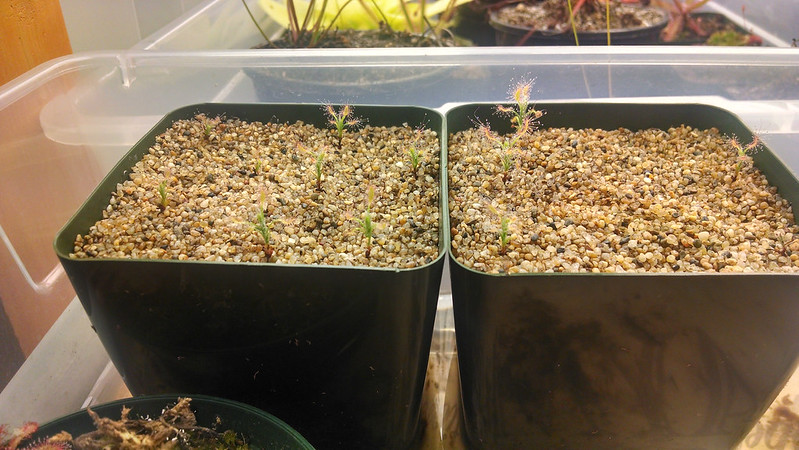 |
| My tiny forest of D. scorpioides, happy on their layer of sand. |
These are the
Drosera scorpioides that I started from gemmae some time ago. The
last time I mentioned these, I was bemoaning the fact that I had, in my carelessness, killed a few of my gemmae. Luckily, all of the gemmae in the left pot bounced back, and I only lost 3 in the pot on the right, which is much better than I'd though. They've put on some nice size, and are starting to stem up. They're also really cute up close.
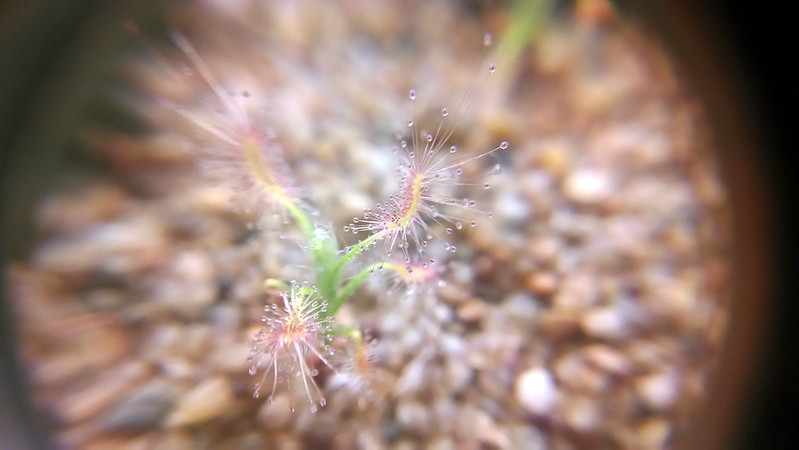 |
| There's a very distinct shape to the laminae and tentacles of D. scorpioides that I enjoy a lot. |
At the
most recent BACPS meeting I also won a pot of more mature
D. scorpioides in the raffle. They are taller than mine, and more densely-sown, which makes for a not-unattractive display, though I think I'll repot them into something a bit larger eventually.
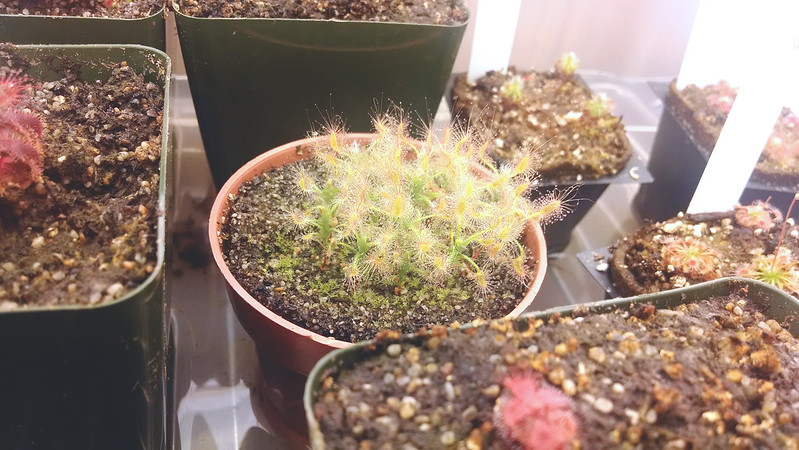 |
| This pot is fairly small, but they don't seem to be suffering from it. I'll still likely repot eventually. |
As I mentioned earlier, I won some pygmies in the NASC auction. Specifically, I won a 4-pack (thanks Brie!) that contained
D. helodes,
D. dichrosepala,
D. pygmaea, and
D. allantostigma. I obviously couldn't pass up the opportunity to expand my collection of these adorable sundews. I received them in the mail a little over a week ago, and they've already started to acclimate and produce dew, which attests to the care with which they were packed, since pygmies can't be bare-rooted (they do
not like root damage, and their roots are very delicate).
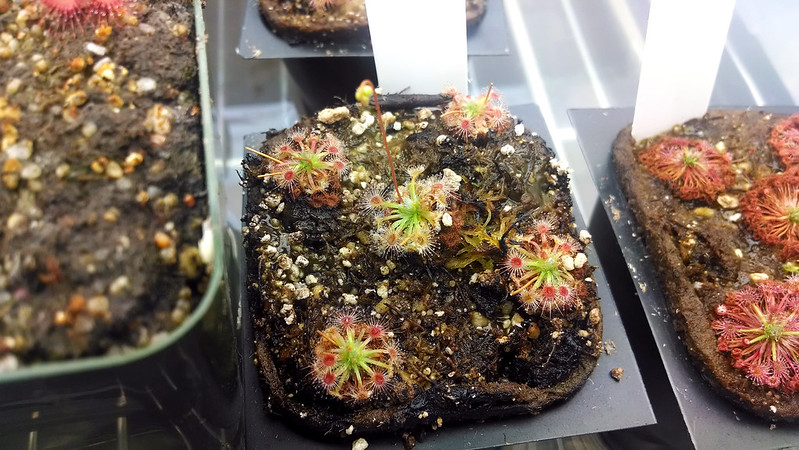 |
| These are all dime-sized, but I love them as much as my huge D. 'Marston Dragon'. |
These
Drosera helodes look great, and the middle one, as you can see, is even deciding to flower! How sweet! I understand that pygmy flowers are quite impressive for their size, and I'm excited to see one for the first time.
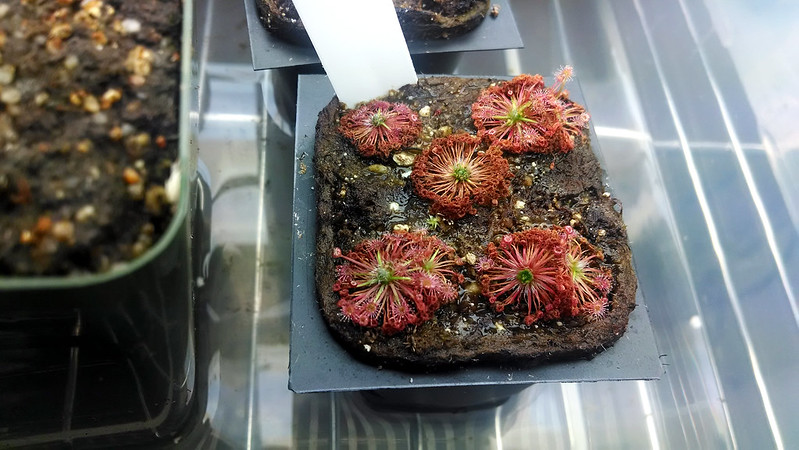 |
| The laminae on these are shaped kinda like those of many of the petiolaris sundews, which is very compelling. |
Drosera pygmaea has something about it that is just so striking – I love the color of the old, expended leaves, and the wonderful round shape. This sundew has so much character for being so small.
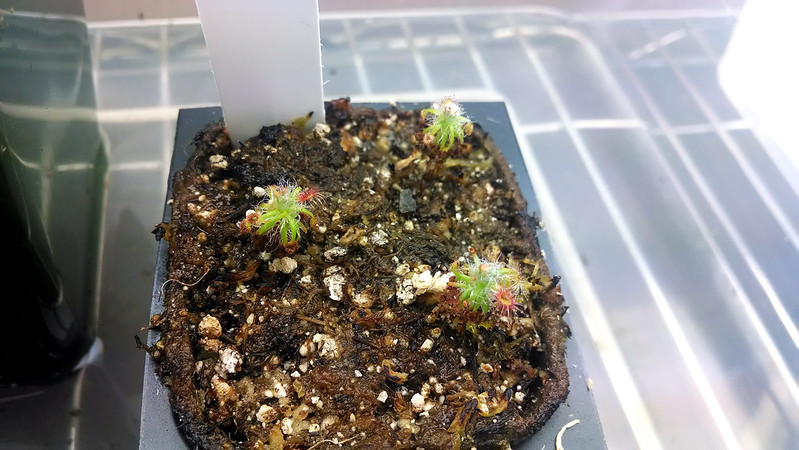 |
| I think there's one leaf with dew on it among these D. dichrosepala, but I want to feed them all at once if possible. |
The
Drosera dichrosepala have taken the longest to settle in, but still look good even though they haven't put out new leaves yet. I hope they do soon, because as soon as they put new leaves I can feed them, which I'm sure they'll appreciate. I want them to grow, because they have great little stems!
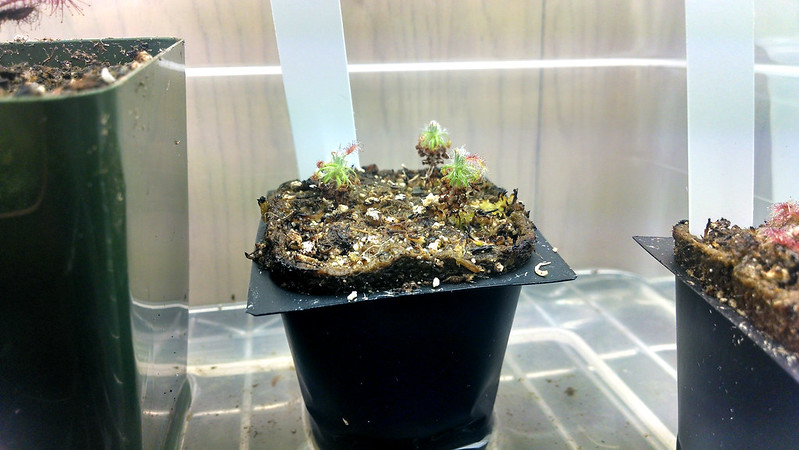 |
| Cute little stems! |
I was especially impressed with the packing job on these. Brie used damp LFS to fill in between the stems, and then wrapped a damp paper towel loosely but repeatedly around the pot to keep the media in place. None of the stems broke, despite being shipped over a thousand miles. It was well done!
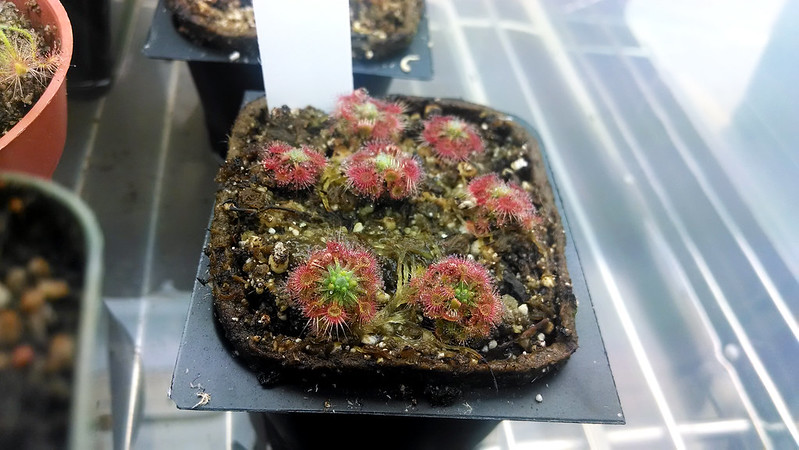 |
| Every single D. allantostigma is happy and producing dew. What troopers. |
Unsurprisingly, the pot of
Drosera allantostigma already looks fabulous. I'm pretty sure that
D. allantostigma is my favorite pygmy, and it certainly vies for position in my heart as favorite sundew overall. It's just so attractive, and so easy to grow.
My own
D. allantostigma is looking so good lately that I entered it into the Terra Forums Plant of the Month competition for May. Since it was a gemma (or nearly a gemma) when I received it, I'm very proud of how it's grown.
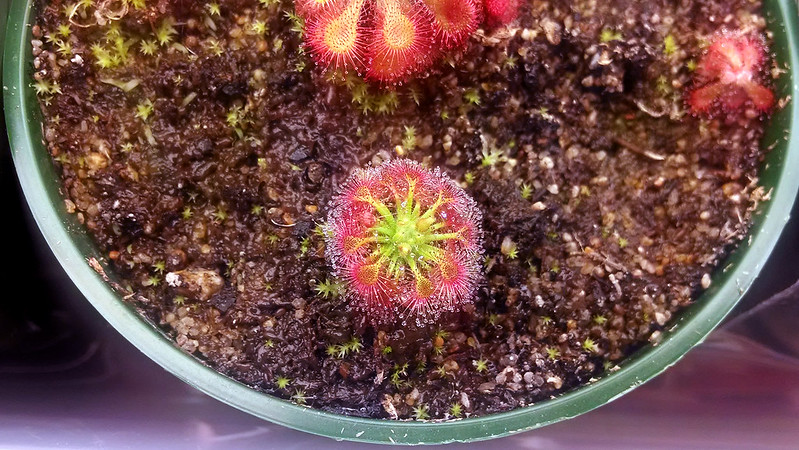 |
| This is such a lovely sundew. |
It's a bit hard to see from above, but it has this shallow dome-like shape that is just breathtaking. My loupe "macro" comes closer, but nothing really compares to seeing it in person. It's just lovely.
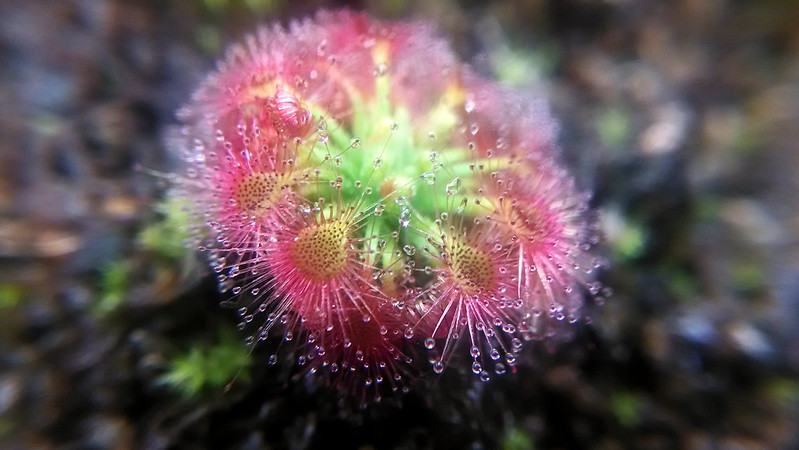 |
| My Drosera allantostigma has also yielded my most successful loupe-macro ("lacro") shot. Coincidence? I think not. |
Come this winter I'm going to have a whole set of lights dedicated exclusively to pygmies, just you watch.










Did you add soil to the pot of scorpioides you got from the BACPS raffle? I didn't and my soil level is at the place where the pot narrows. The scorpioides definitely look better when they are closer together, although it makes feeding individual plants a little more difficult.
ReplyDeleteKeep us updated on the pygmies. They look great!
ReplyDelete